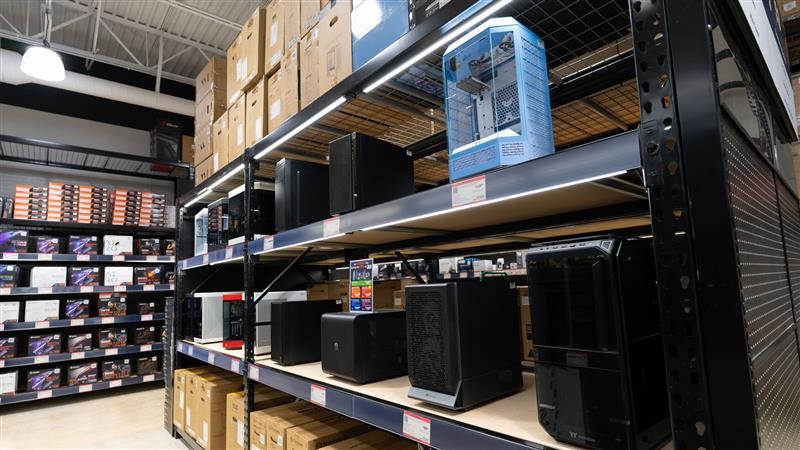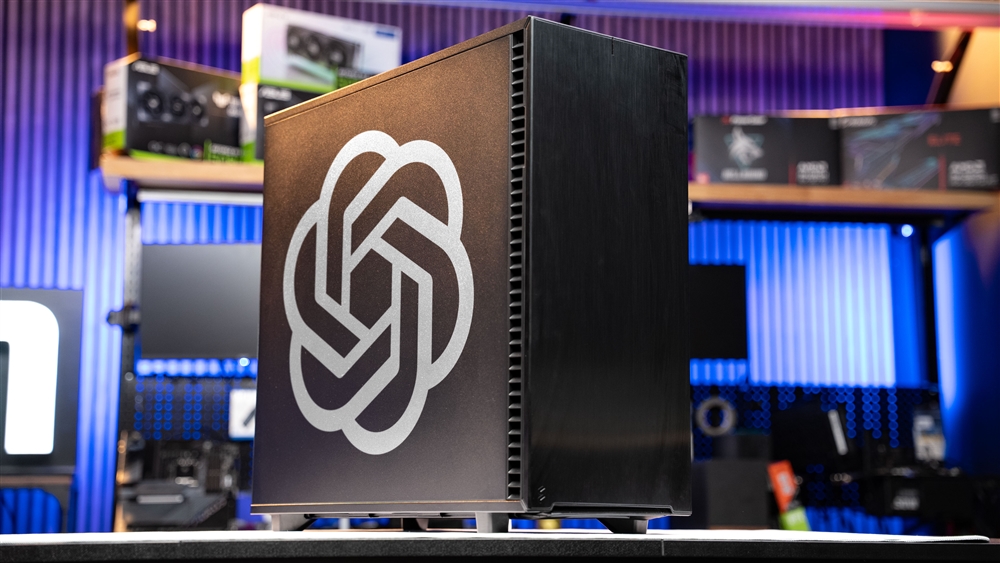AMD Ryzen Threadripper 3990X Review
In this review, we will be going over the various features of the new Ryzen Threadripper 3990X, how it performs against AMD's last generation flagship and it's performance relative to the current consumer processing kings on both the Red & Blue teams.Reviews

AMD Ryzen Threadripper 3990X Review
To some of you, it may feel like it's only been a few months since AMD took the HEDT market by storm. That's because it was only a few months ago when AMD took the performance crown with the launch of their Threadripper 3000 series processors. Apparently having the fastest HEDT processor wasn't good enough for AMD, and the lack of competition in this market meant they had to become their own competitor. Enter the Ryzen Threadripper 3990X, AMD's proof that you can solve all of your problems by throwing more cores at it!
In this review, we will be going over the various features of the new Ryzen Threadripper 3990X, how it performs against AMD's last generation flagship and it's performance relative to the current consumer processing kings on both the Red & Blue teams.
Threadripper 3000 Series Pricing & Specifications
| AMD Ryzen™ Threadripper™ 3960X | AMD Ryzen™ Threadripper™ 3970X | AMD Ryzen™ Threadripper™ 3990X |
Price | $1399 | $1999 | $3990 |
Cores/Threads | 24C/48T | 32C/64T | 64C/128T |
Base/Boost Clocks | 3.8GHz / 4.5GHz | 3.7GHz / 4.5GHz | 2.9GHz / 4.3GHz |
Cache Quantity | 12MB L2 Cache 128MB L3 Cache | 16MB L2 Cache 128MB L3 Cache | 32MB L2 Cache 256MB L3 Cache |
TDP | 280W | ||
CCD Configuration | 4x 6-core CCDs | 4x 8-core CCDs | 8x 8-core CCDs |
Transistor Count(s) | ~3.9 billion per CCD ~8.34 billion for IOD | ||
Die Size(s) | 74mm² per CCD 416mm² per IOD | ||
Lithography> | 7nm for CCDs (TSMC) 12nm for IOD (GloFo) | ||
Socket Compatibility | Socket sTRX4 (LGA 4094) | ||
Required Chipset | AMD TRX40 (15W peak TDP / 14nm GloFo) | ||
Core Architecture | AMD Zen 2 | ||
CPPC2 Fastest Cores | 2x in CCD4 | ||
Socket Power Infrastructure | 280W PPT, 300A EDC, 215A TDC | ||
This review will focus specifically on the Threadripper 3990X, however it’s important to understand exactly where it sits in the rest of the Threadripper 3000 product stack. AMD is offering a 24 core, 48 thread 3960X as the entry level processor for this platform. Next, we have the 32 core, 64 thread 3970X which sits in the middle of the stack. Prior to the launch of the 3990X, it was the king of HEDT and still offers insane performance for its asking price. Lastly, we have the main event, the Threadripper 3990X. Boasting 64 cores, 128 threads and a massive 256MB cache, it’s unlike anything on the market.
Zen 2 Architecture Overview
Looking at the numbers on paper, it’s easy to see why the 3rd generation Threadripper CPU’s are dominating the HEDT market, but it’s important to understand exactly why, and how AMD managed to pull it off. One of the key areas to their success was the topology of their 3rd generation Ryzen processors. As with the previous Ryzen generations, AMD is using an MCM or Multi-Chip Module design over the single, more traditional monolithic die. The biggest difference with this generation of Ryzen processors is that AMD has moved their central IO functions off the processor die, and on to its own I/O die.

Image courtesy of AMD
As you can see in the image above, there are multiple CCD’s or Core Chiplet Die’s that contain the Zen 2 CPU cores and their respective L3 caches. All of this is connected to a central I/O die that is responsible for providing each CCD access to PCIe lanes and system memory. You will likely notice that there are multiple memory controllers on this I/O die, and that everything is weaved together by small blocks marked with the infinity symbol ∞. This symbol represents AMD’s Infinity Fabric, a high-speed interconnect through which all these dies are woven together. This unique design also allows AMD to scale their processors in a very dynamic manner as they can simply pick and choose each CCD configuration for their processors. It also allows AMD to improve their yield rates and reduce waste by using the dies that didn’t perform to their original standards in a different capacity.
The current 3rd generation Threadripper product stack is a great example of this in effect. For an example, let’s say AMD designed a 32 core Threadripper with a 4x 8-core CCD configuration. Let’s also say that in the process of picking out the best 8-core dies, they noticed that some of the cores were unable to meet the standards that they designated for this 32-core processor. Instead of throwing the dies away and wasting silicon, AMD can modify the dies and design a 4x 6-core CCD configuration to create a 24 core Threadripper. The improved yields and waste reduction aside, this also plays an important role in filling a void in a market. Without this practice, you may end up with a wider product stack with a wider gap of prices and nothing to fit in between, making it difficult for consumers to find the best product for their budget. This is also true for the 3990X, which is made up of the very same dies used in AMD's EPYC server lineup of processors.
TRX-40 Chipset Features
Now that we’ve covered the history of the Ryzen architectures and the internal design of the new Threadripper processors, it’s time to discuss the platform. Even the best processors in the world can be detrimental to your workflow and user experience without a strong, feature-rich chipset to make use of the processing power. Luckily the TRX40 chipset offers some of best cutting-edge features on the market.

Image courtesy of AMD
AMD was the first to bring PCIe 4.0 to consumers with the launch of the Ryzen 3000 series processors, and they made sure to provide plenty of PCIe 4.0 lanes with their Threadripper CPU’s and TRX40 chipset. With the CPU boasting 64 PCIe 4.0 lanes and the TRX40 chipset offering up to 24, that is a combined total of up to 88 PCIe 4.0 lanes, 72 of which is usable. It’s important to keep in mind that these lanes offer twice as much bandwidth as PCIe 3.0. For larger render farms requiring multiple PCIe x16 GPU’s or massive high-speed data centers that require a large array of NVMe drives, this platform has you covered.
| USB 10Gbps | USB 480Mbps | SATA 6Gbps | PCIe 4.0 Lanes Usable/Total |
AMD TRX40 Chipset | Up to 8 | Up to 4 | Up to 12 | 16/24 |
3rd Gen Threadripper | Up to 4 | 0 | Up to 8 | 56/64 |
Total Platform I/O | Up to 12 | Up to 4 | Up to 20 | 72/88 |
Now that we understand the platform features, it’s time to move on to our testing.
System Configuration & Testing Methodology
The primary goal of this review is to illustrate the performance of the Threadripper 3990X in the areas that it was designed to be used in. With that in mind, we understand that we will get the inevitable “Can it run Minesweeper!?” question and believe me, we intend to answer that question and more. For that reason alone, we will be adding additional systems to our test suites to represent both AMD’s best consumer CPU, Intel’s best consumer CPU and AMD’s previous flagship. The test systems and their configurations are listed below. For pricing and availability of each component, click their respective hyperlinks.
Components | System 1 (TR 3990X) | System 2 (R9 3950X) | System 3 (i9 9900K) | System 4 (TR 2990WX) |
Processor | Threadripper 3990X | |||
Motherboard | ||||
Memory | 32GB DDR4 3200 C16 (2x16GB) | |||
Power Supply | ||||
Chassis | Thermaltake Versa H21 | |||
Cooling Solution | ||||
Graphics Card | Zotac RTX 2080 Ti AMP! | |||
Storage | ||||
Operating System | Windows 10 Pro 1909 | Windows 10 Pro 1909 | Windows 10 Pro 1909 | Windows 10 Pro 1909 |
Graphics Driver Ver. | WHQL 441.87 | WHQL 441.87 | WHQL 441.87 | WHQL 441.87 |
Aside from the PBO tests on the 3990X, none of the systems are overclocked and are running at stock settings with the exception of DOCP/XMP profiles as they are enabled on all systems. The AMD systems are using the Ryzen Balanced power plan while the Intel system is running on the High Performance power plan. All benchmarks have been performed 3 times and the results have been averaged. The only exception is Assassin's Creed Odyssey, which we ran 5 times due to some of the heavy variance from test to test.
















Conclusion & Final Thoughts
I think AMD hit the nail on the head here. While you technically can game on this processor, it’s not a gaming processor. This processor is designed with real intense work in mind. VFX studios, data centers that need copious amounts of PCIe lanes, even large VM farms that can utilize the many cores that the 3990X has to offer. If you are looking for a gaming processor, the Ryzen 9 3950X and Core i9 9900K are better suited for that task.
If work is your primary concern, and you spend several hours or even days waiting for computational tasks to complete, then the 3990X might just be the right processor for your needs.
Have any questions or comments? Let us know in the comment section below! Interested in learning more about the Ryzen Threadripper 3990X? Visit our FAQ here.Interested in building a system like the one we used to review the 3990X? Check out our build guide!
Comment on This Post
See More Blog Categories
Recent Posts
This Week in AI: OpenAI's Big ChatGPT Upgrades, GPT-5 and GPT-OSS
For Aug. 8, 2025: Google Jules launches, Anthropic upgrades Opus, YouTube using AI to sniff out kids, AI trips up another legal case, Apple Intelligence under pressure.
Continue Reading About This Week in AI: OpenAI's Big ChatGPT Upgrades, GPT-5 and GPT-OSS





